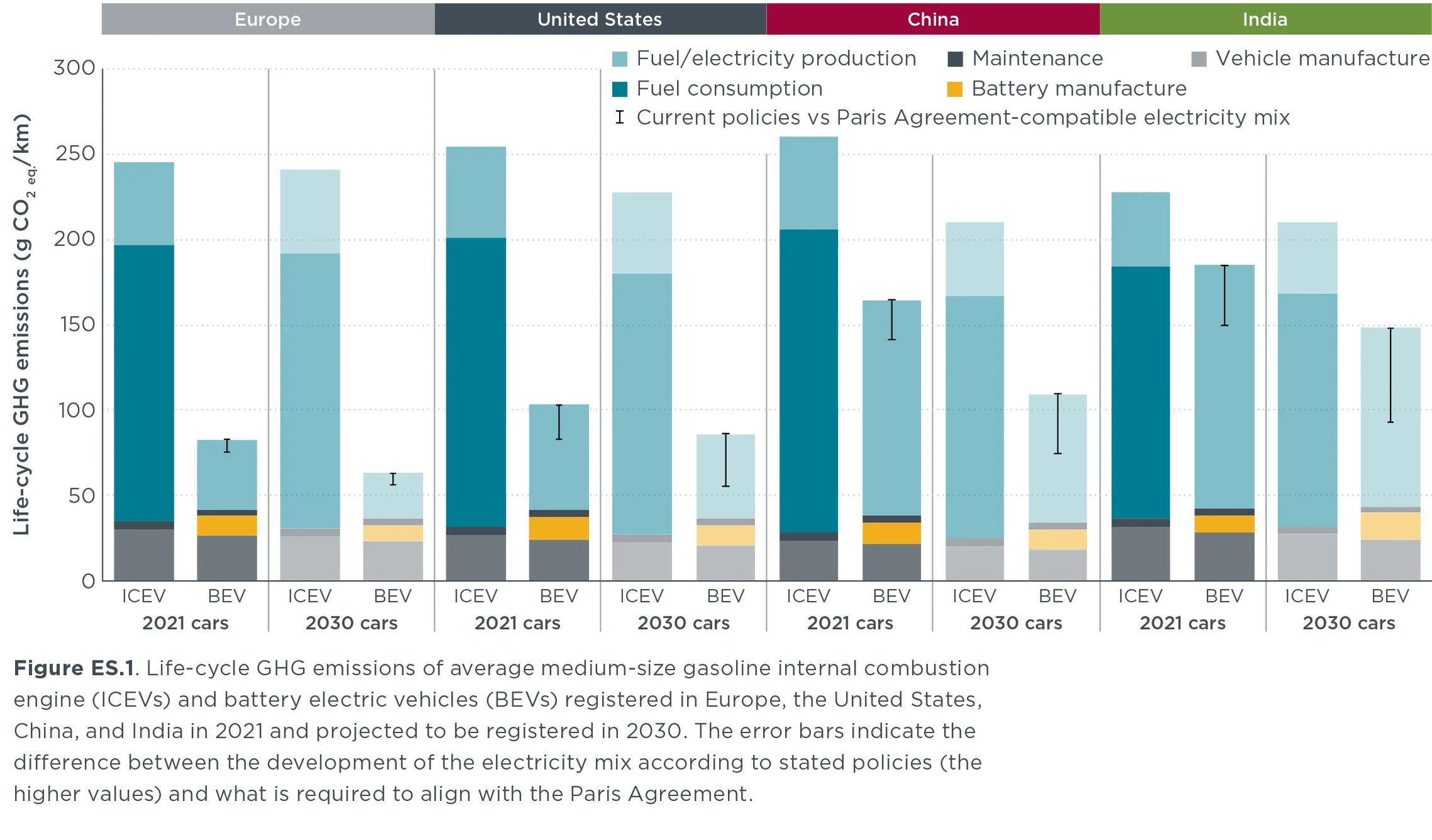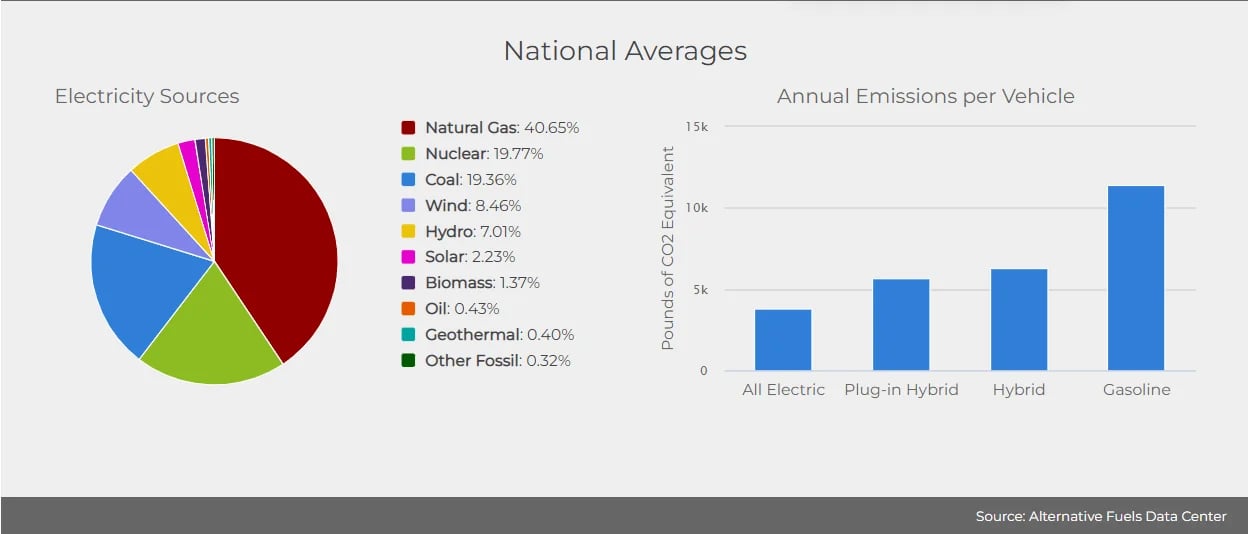Electric car sales are booming across the globe with countries like Norway leading the charge (pardon the pun) by selling 116 electric cars for every petrol car sold in the first two weeks of 2022. In the UK, EV sales increased by 76.3% in 2021. In Denmark, it was reported in December 2021 that the share of electrified passenger vehicles, including both battery electric vehicles (BEVs) and plug-in hybrids (PHEVs), has surpassed 50%. The writing is on the wall as they say, but how do EVs compare to ICEVs when you look at the total GHG emissions from production and operation?
WHEN ARE ELECTRIC VEHICLES "GREENER"?
We can agree that EVs contribute no tailpipe GHG emissions, but EVs have an initial higher carbon footprint after production than ICE vehicles due to the energy-intensive battery pack manufacturing processes.
However, the initial CO2 footprint associated with EV production is dwarfed when compared to the operational CO2 footprint of ICE vehicles. The initial carbon deficit from manufacturing only takes several thousand vehicle-miles/year of ownership to overcome and depending on how "green" your energy grid is, EV carbon parity with ICE vehicles can be reached as quickly as six months.
The image above shows national averages of power grid energy sources and annual emissions per vehicle in the United States. Depending on which state you are in, the availability of renewable electricity sources can make a big difference to how green your EV is to operate compared to plug-in-hybrid, hybrid and gasoline. Try out this calculator that looks at annual emissions per vehicle.
Production of EVs and batteries generate more CO2 before the first wheel turns, however, the total carbon footprint of ICE vehicles quickly overtake that of the EVs after 15,000 miles (24,140 km) of driving.
- It takes a typical EV about one year in operation to achieve "carbon parity" with an ICE vehicle.
- If the EV draws electricity from a coal/fired grid, however, the catchup period stretches to more than five years.
- If the grid is powered by carbon/free hydroelectricity, the catchup period is about six months.
The good news is that GHG emissions from battery production have decreased over the past decade due to efficiencies from upscaling production and the introduction of more renewable energy sources on global energy grids.
GHG EMISSIONS IN PRODUCTION
As of December 2021, every major lithium producer outside of China has made a net-zero commitment to reduce greenhouse gas (GHG) emissions.
In the image below, it is clear to see how electricity production GHG is projected to decrease with the advancements in renewable electricity sources. However, battery manufacturing GHG projections for BEV seem to remain the same for most regional projections. How can we further reduce the CO2 footprint of battery manufacturing?

Currently, 19% of the energy demands for a lithium battery pack stem from battery cell production (page 18 at ivl.se).
Of that 19%, 43% of the process energies of lithium battery cell production stem from running the dry rooms (page 20 at ivl.se).
Battery dry rooms are one of the main reasons for the high CO2 footprint related to battery cell production because of the large quantities of gas or electricity needed to run the dehumidifiers to keep the dry room dry—that is a relative humidity of under 1% and dew points ranging from -40°C to -120°C. Cotes offers an Ultradry-air solution for battery dry rooms, that uses Cotes Patented Exergic Technology, enabling the dehumidifiers to run on waste heat, solar thermal energy, or heat pumps. This can cut GHG emissions by up to 95%, making the battery pack up to 7,7% greener.
In a typical EV, the battery share of the total CO2 footprint is 40-50%. This means that drying the dry room the right way can reduce the CO2 footprint of the entire car by 3-4%. The good thing is that it is also the most economical solution. We had a closer look at a recent case study in Western Europe to argue ROI and cost savings.
|
If you are a car or battery manufacturer that wants to go green(er) and save costs, then reach out to us. Cotes can help you find the right dry-air solution for your facilities and give you the competitive advantage of a more sustainable Li-ion battery. Contact Joris Vieux, Global Manager Battery & |
|
Are you curious about the potential energy savings for your battery dry rooms? Take a look at our free online calculator below.



.webp)